The Sacred Valley of Peru has many memorable and unique attractions. Pisac was the first town we visited as we made our way to the valley and Machu Picchu. Explore and read some tips for visiting the Pisac ruins and market.
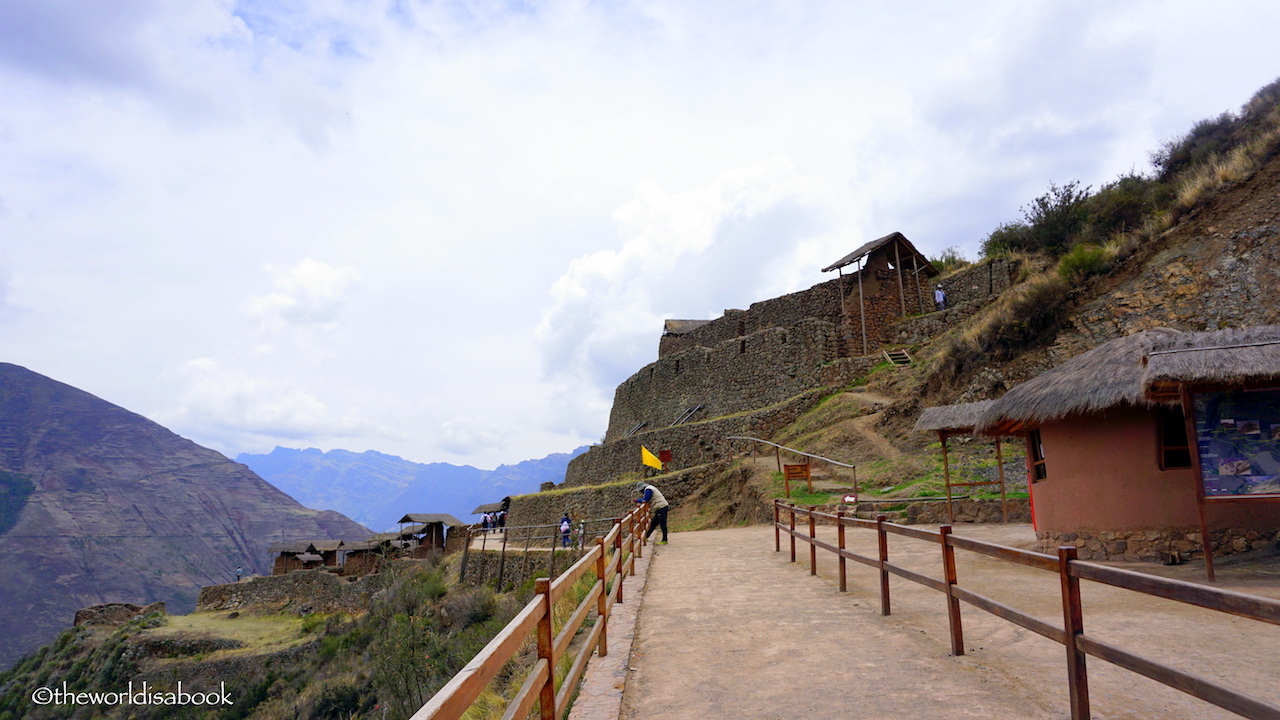
Where is Pisac?
Pisac is located about 19 miles (28 km) from the major city of Cusco. Located along the Urubamba River, its major attractions are the Inca Pisac which are the mountaintop ruins overlooking the town and the Sacred Valley’s largest handicraft and produce market.
This was our first glimpse of the ruins high up on the hill. We had a driver who picked us up from the Cusco airport and took us through the Sacred Valley with stops in between.
Many taxis were available in the colonial town of Pisac and Sacred Valley tours were also available from Cusco. It was a picturesque drive through the winding mountainous road.
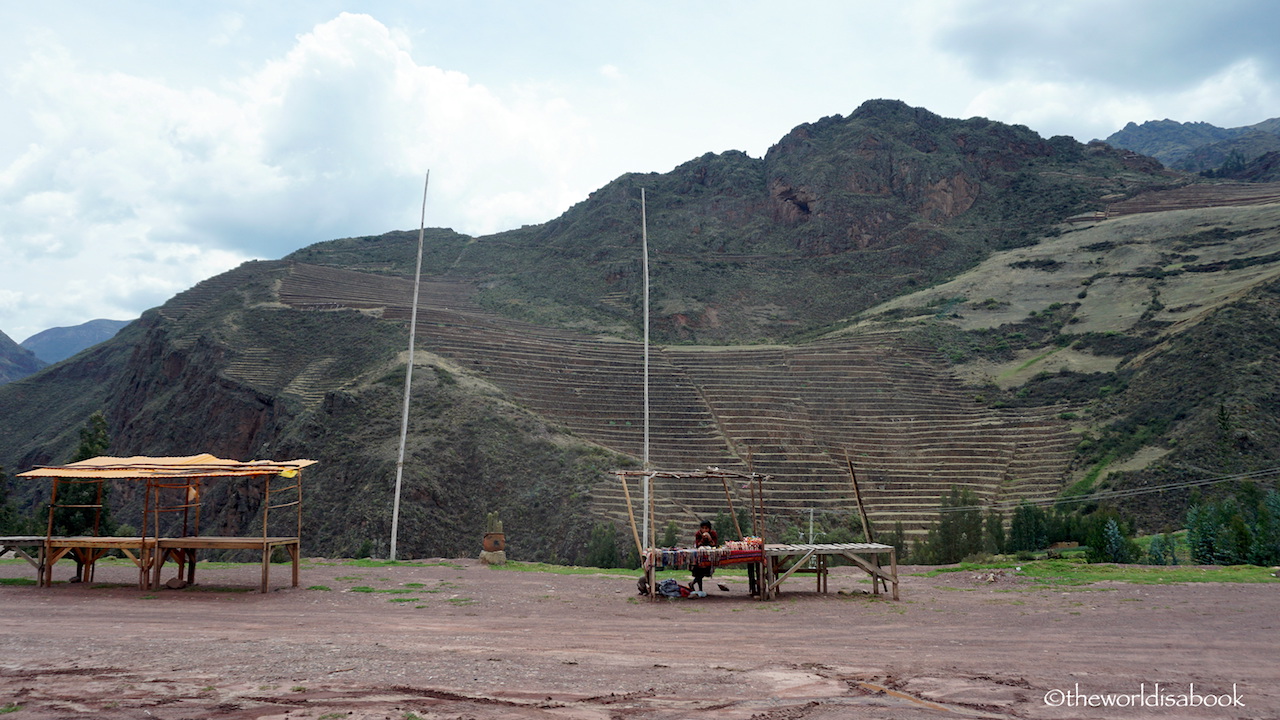
The Pisac Inca Ruins
After getting our entrance tickets, our driver dropped us as close to the entrance as possible. It was a bit of an uphill climb to the ruins entrance. We were here in late November and there were a lot of people. I can’t even imagine the traffic and crowd here during the summer.
There were many vendors along the side of the road selling souvenirs, food and juices. If you’re in Peru, you must try some of their corn. The kernels were bigger than what we were used to but they were delicious.
Peruvian crafts and souvenirs were so colorful and unique. We loved seeing all the handicrafts and textiles. And they were so cheap! We were so tempted to buy so many things from the vendors. Since this was our first time seeing all the crafts, we restrained from buying too much and went on to the ruins.
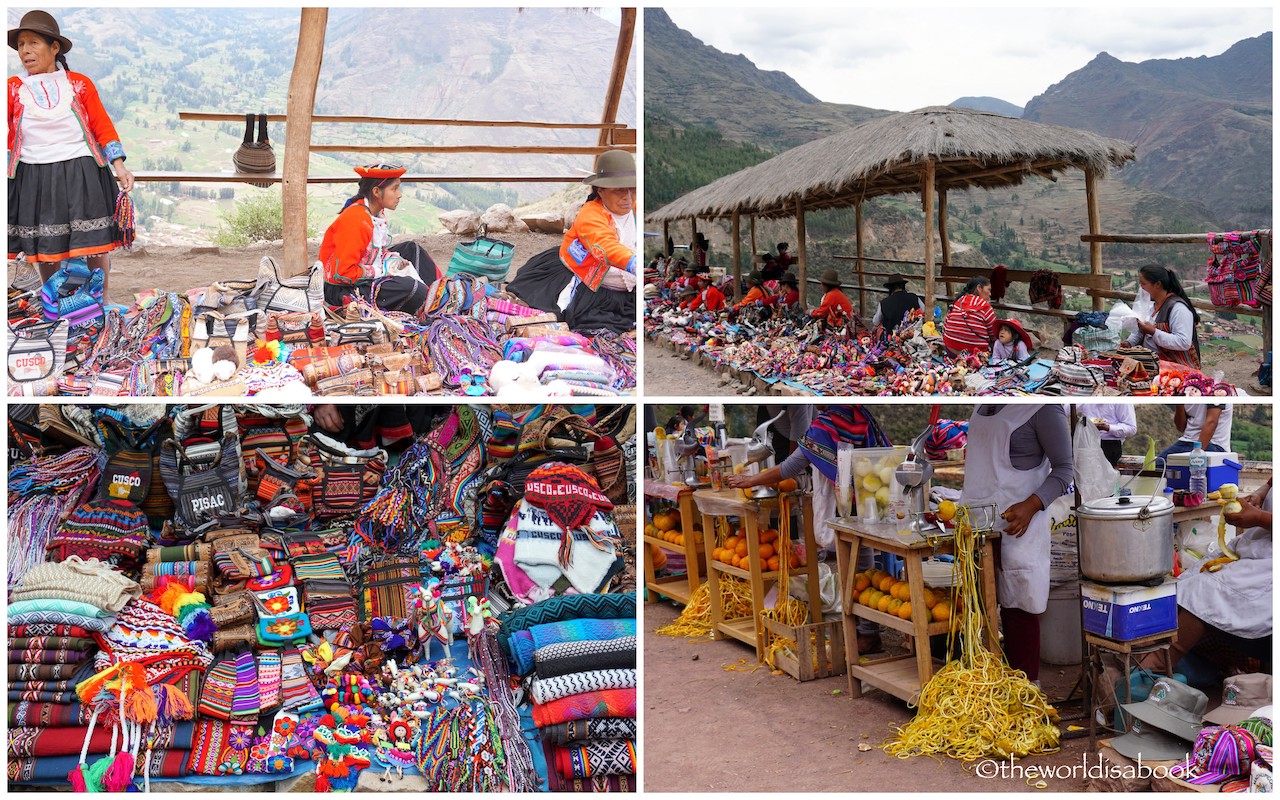
History and Structures of Pisac
Historians estimated the Pisac ruins were built around the early 15th century (no one really knows for sure). They believed it was used to defend Cusco, which was the capital of the entire Inca empire, from any invasion. Another theory was that it was a gift to the Inca nobility.
No matter its main purpose in the beginning, Pisac also had religious, agricultural, residential, military structures in place within this fortress and community. The Incas knew how to make structures that would last for centuries.
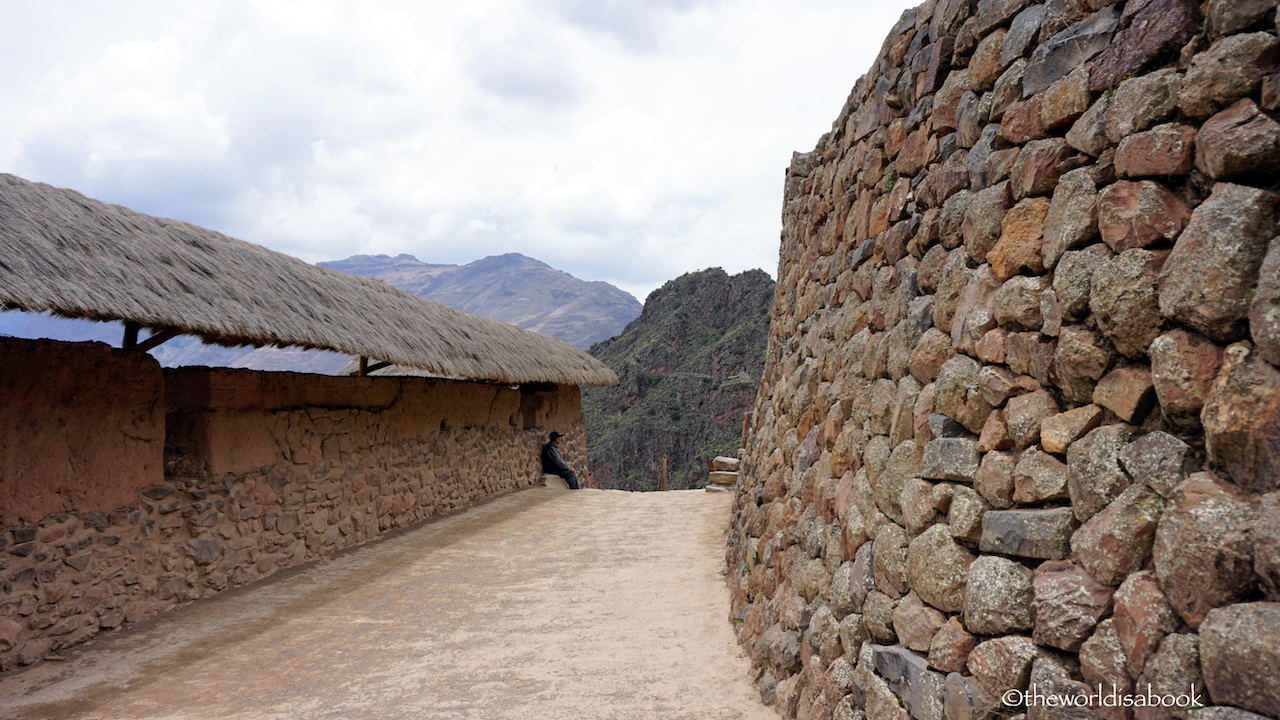
Four areas, that spanned about a half mile (1 km) on a mountain ridge, separated the ruins. We now regret not having a guide going through here.
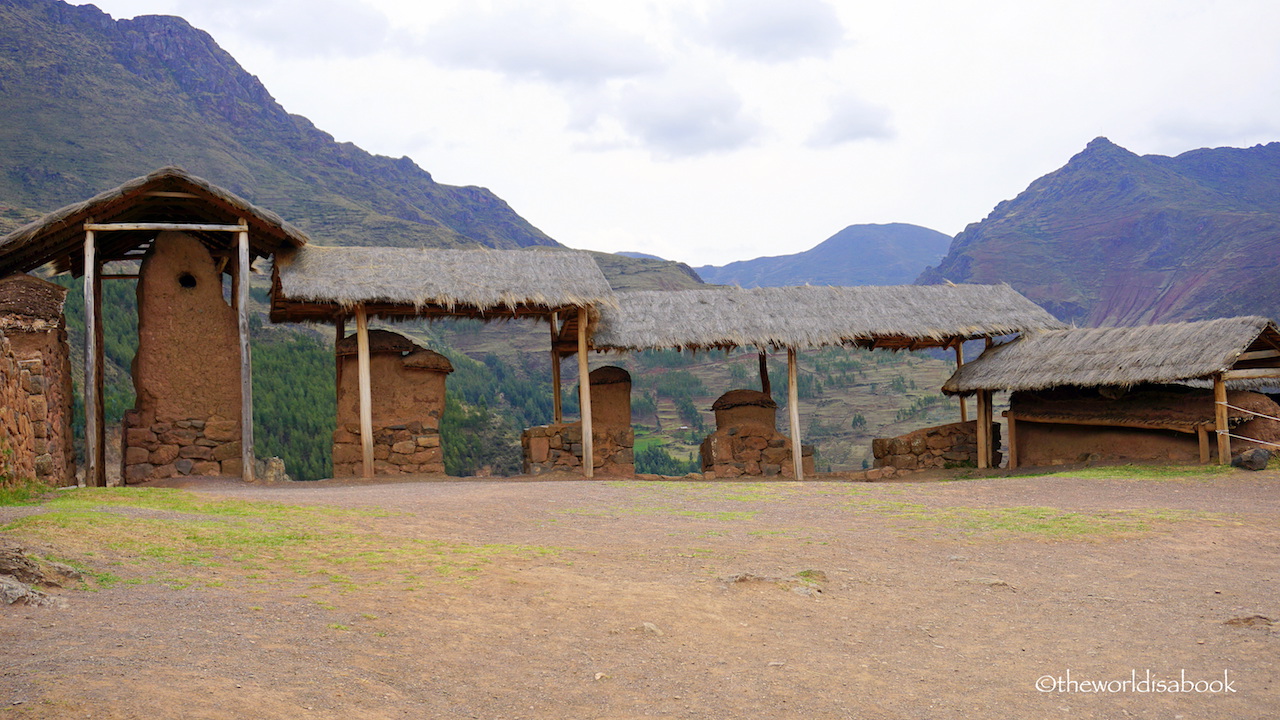
There were so many interesting structures and there weren’t any signs. These ruins were some of the most well-preserved in Peru.
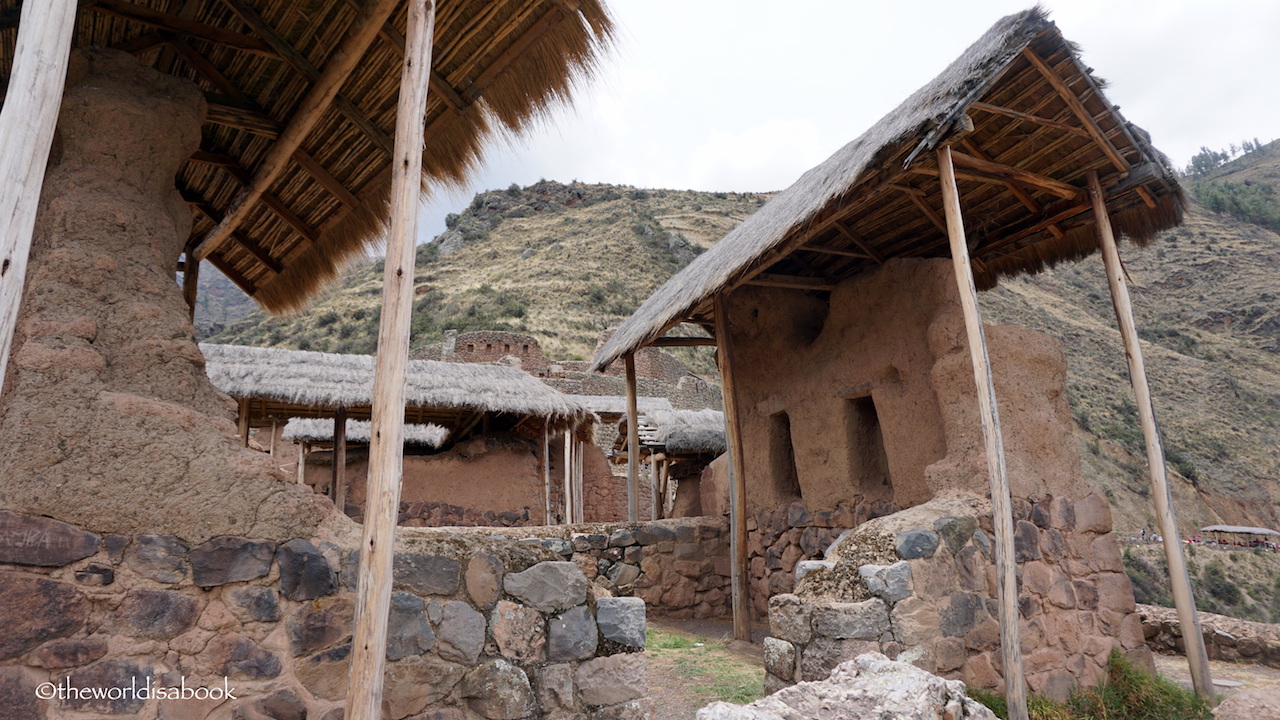
The panoramic views of the countryside, river and part of the Sacred Valley were beautiful from this vantage point.
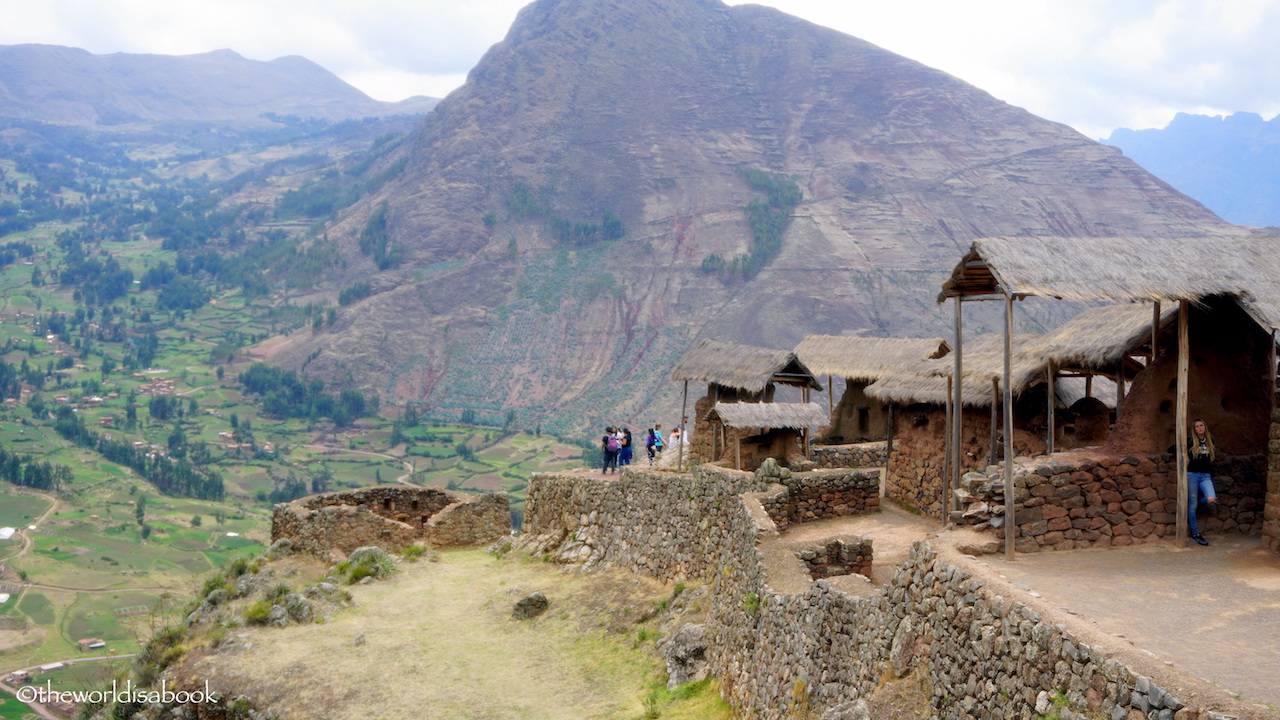
Agricultural Sector
They built the ruins on top of many rows of stone terraces. These agricultural terraces almost looked like stepping stones to the settlement.
The locals believed that this particular agricultural layout represented a partridge’s wing. Pisac was derived from the word Pisaca which means “partridge”.
It was hard to imagine how the Incas built these huge, steep andenes or agricultural terraces all along the hillside. There were several hundred here.
They were able to have more farming area to grow crops by building these terraces. Many of them are still in use today.
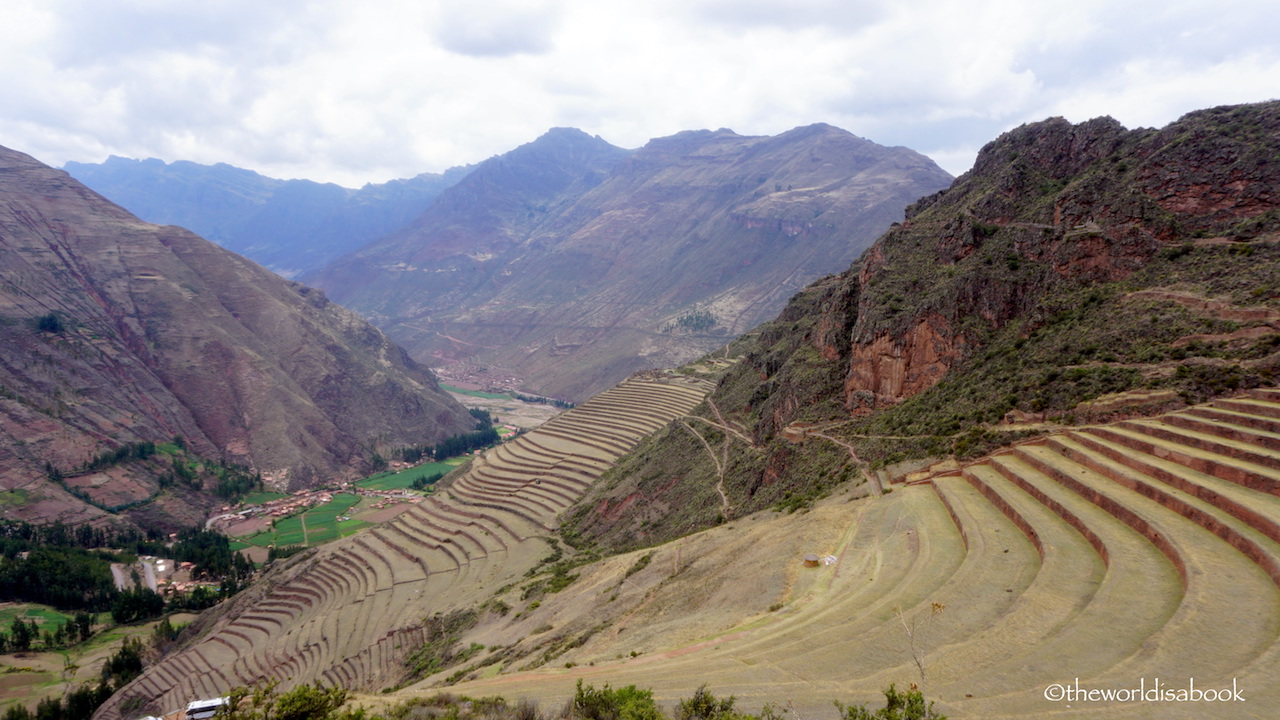
Residential Sector
The one area where we spent the most time was near the main entrance. This was believed to be one of the residential areas. Stone buildings surrounded the small squares used for gathering. We could almost imagine the Incas living here and looking out into the valley below.
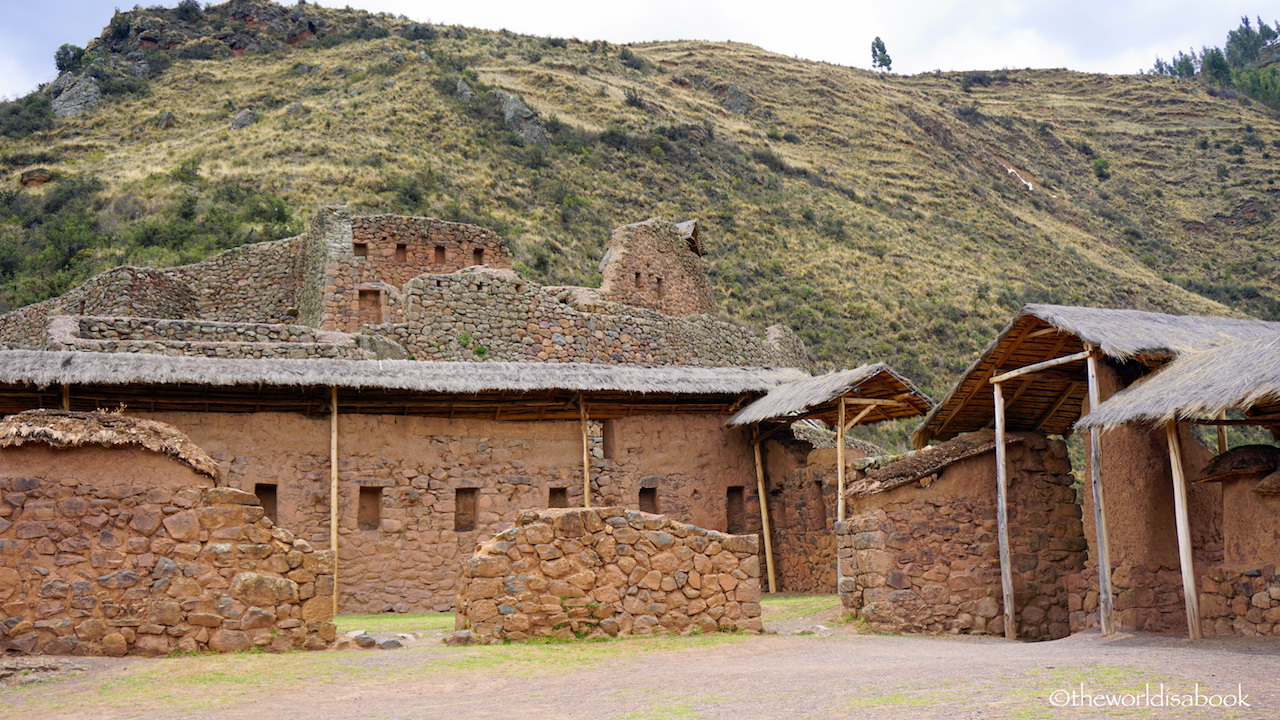
Pisac Defense Sector
This area was once the location of an important Inca road through the Sacred Valley. The ruins’ strategic position up on the mountain ridge was important to defend Cusco and the valley’s southern area. It was certainly easy to see all the activity below from these towers.
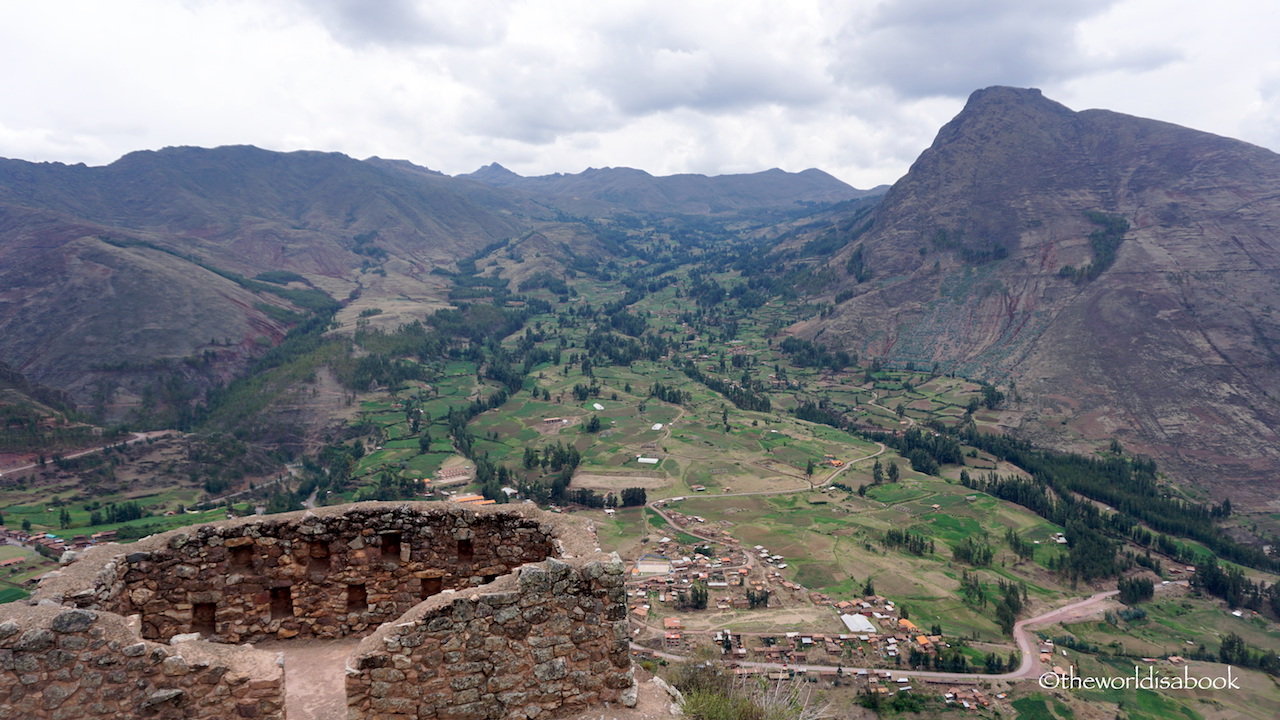
Upper Sector (Religious Area)
This was our first Inca ruins visit and only a few hours after landing in Cusco. This region is in high elevation. Living near sea level, we didn’t let our bodies fully adjust. We decided to descend to the lower elevation in the Sacred Valley first which we thought would help. Though, Pisac was still at 9,514 ft (2,900 m). Unfortunately, most of us felt sick in varying degrees during those first moments in Pisac.
We didn’t feel like climbing up to the top or doing any strenuous hike since we hadn’t acclimated to the altitude yet. Climbing a small set of stairs was hard enough with labored breathing and slight dizziness from the altitude. We were tired from barely walking up a small hill.
We saw the upper sector from below and it looked impressive. It was a bit of a climb to get to the top. I’m sure the panoramic views from up there were even more impressive.
This area had a Temple of the Sun as well as altars, Inca baths, storage buildings, fountains, burial sites (many haven’t been excavated) and a ceremonial platform. This area also contained the site of the largest known Inca cemetery.
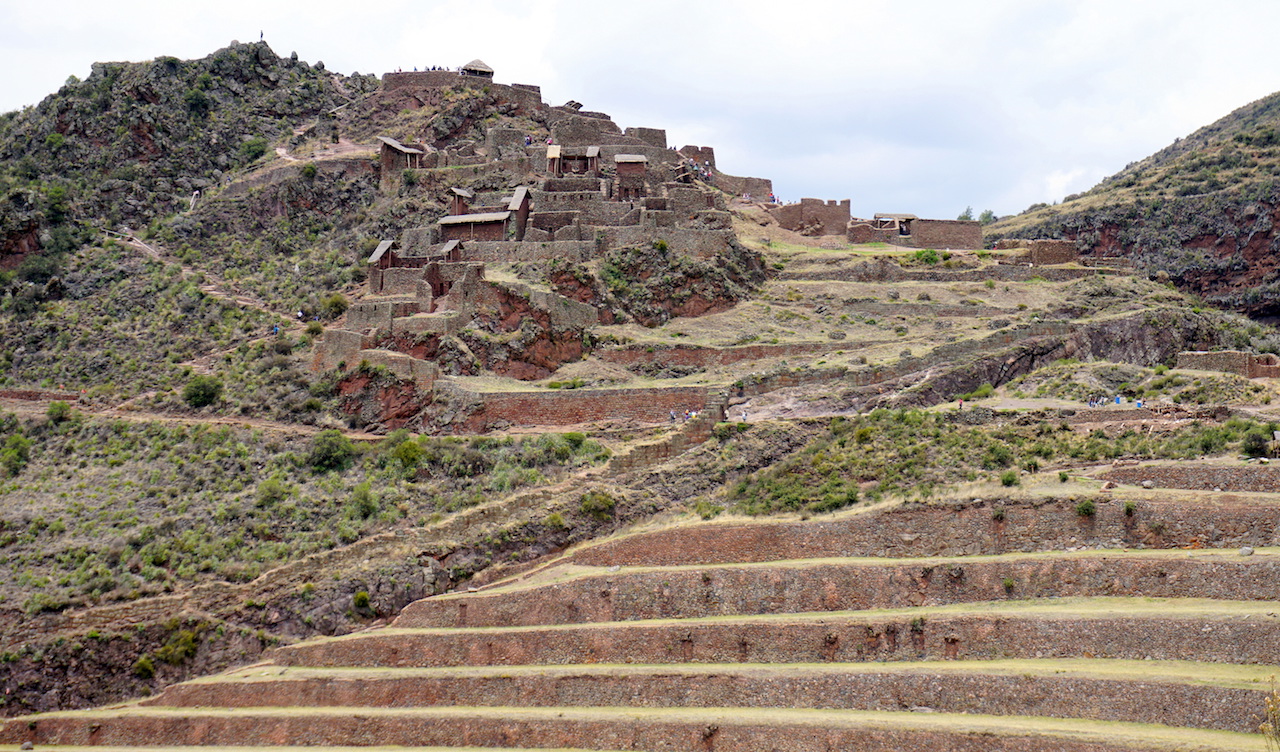
Visiting the Pisac Market
After visiting the ruins, our driver dropped us off into the town center to wander the market. Pisac has a craft market everyday but the markets really come alive during Sundays.
We repeatedly read it on guides and luckily, we were here during Sunday afternoon. Tour groups from Cusco bring many visitors here for the ruins and some shopping afterwards.
One of the best things about traveling with friends on a girls’ trip was of course, the shopping. There were no husbands or boyfriends to tell us to hurry up or grumble why we’re buying things we don’t need. The Pisac markets were one of the best we visited during our week in Peru and one of the best we’ve visited during our travels.
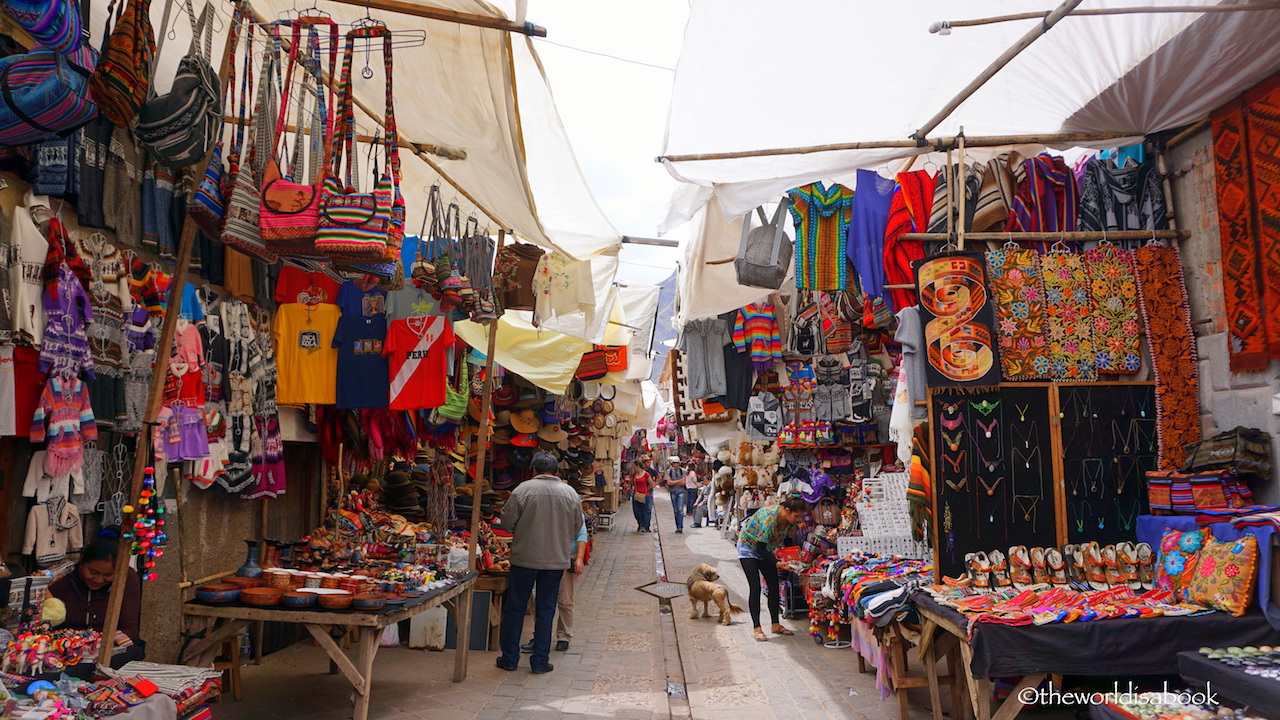
By the time we got to the markets we were all feeling a bit better from the altitude. Maybe it was the thought of shopping or seeing all the colorful merchandise. Pisac’s craft market is known for its many handmade products by locals and artisans from neighboring villages.
We spent at least two hours here and could have spent more if we didn’t exercise some self-control. We were quite excited visiting our first Peruvian market. It was easy to go overboard shopping here.
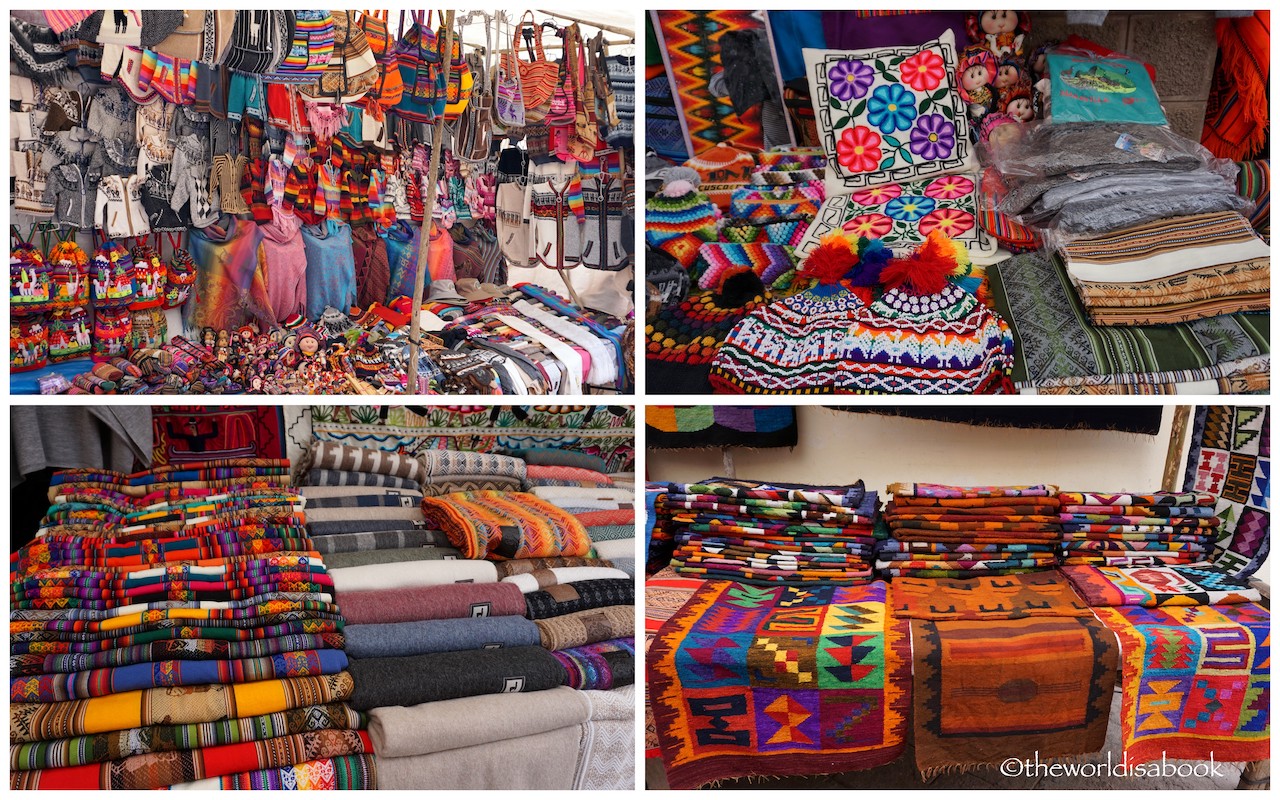
There were over a hundred stalls in the market and maybe more in neighboring streets we didn’t see. Some were selling the same things so be sure to wander and look around.
We found jewelry, art, Peruvian crafts, decorations, so many textiles (scarves, blankets, rugs, etc.), every imaginable size bag or purse you can want and plenty of clothing including those made of alpaca.
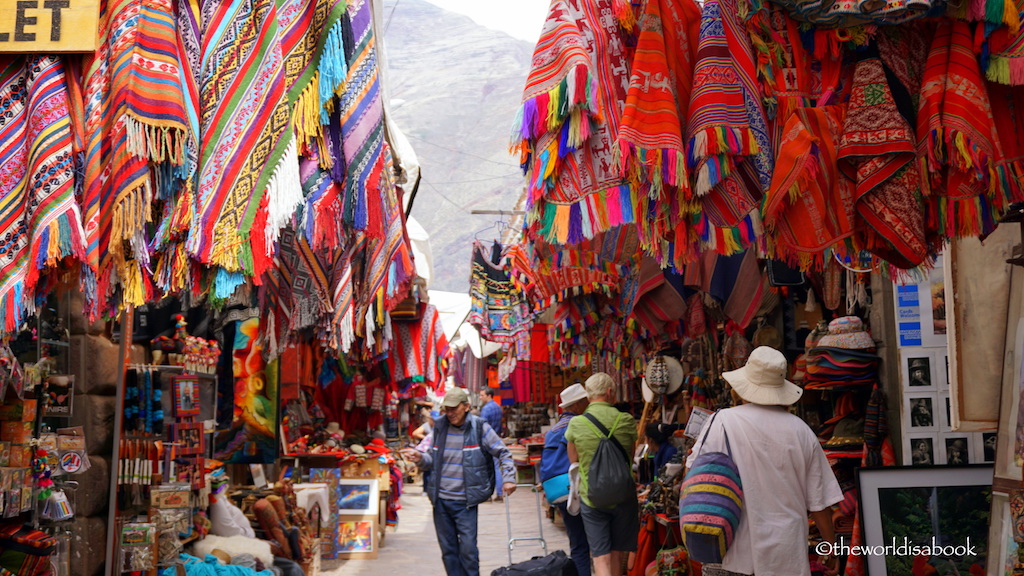
My daughter was happy to come across some locals wearing their colorful costumes. It was a bonus that they had a lamb with them.
It was customary to give the locals a few soles (equal to less than a dollar) when taking a photo with them. This was the first of many photos with the locals and their pets.
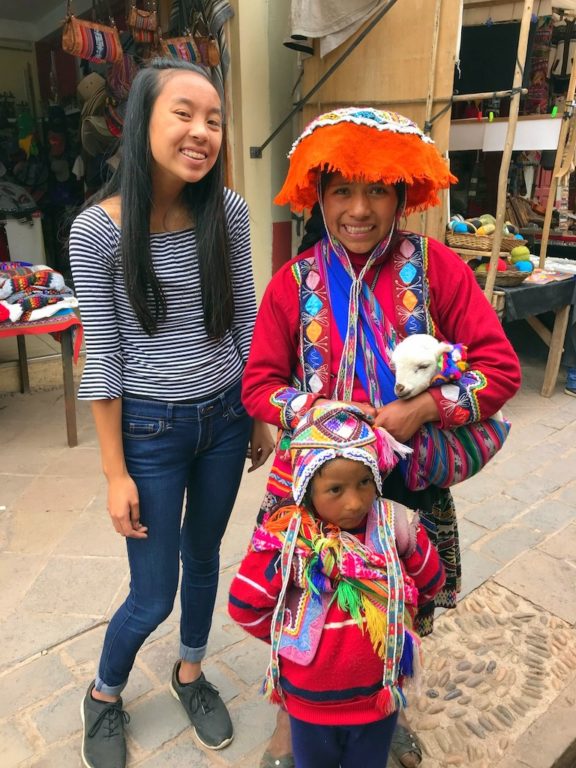
The Pisac Main Square
Pisac’s main square is a center of activity on Sundays. The locals from the mountains and nearby villages come down to sell their fruits, vegetables, spices, colorful dyes and other products.
We saw so many varieties of potatoes and corn. There was so much activity going on that it was worthwhile to step aside and just observe.
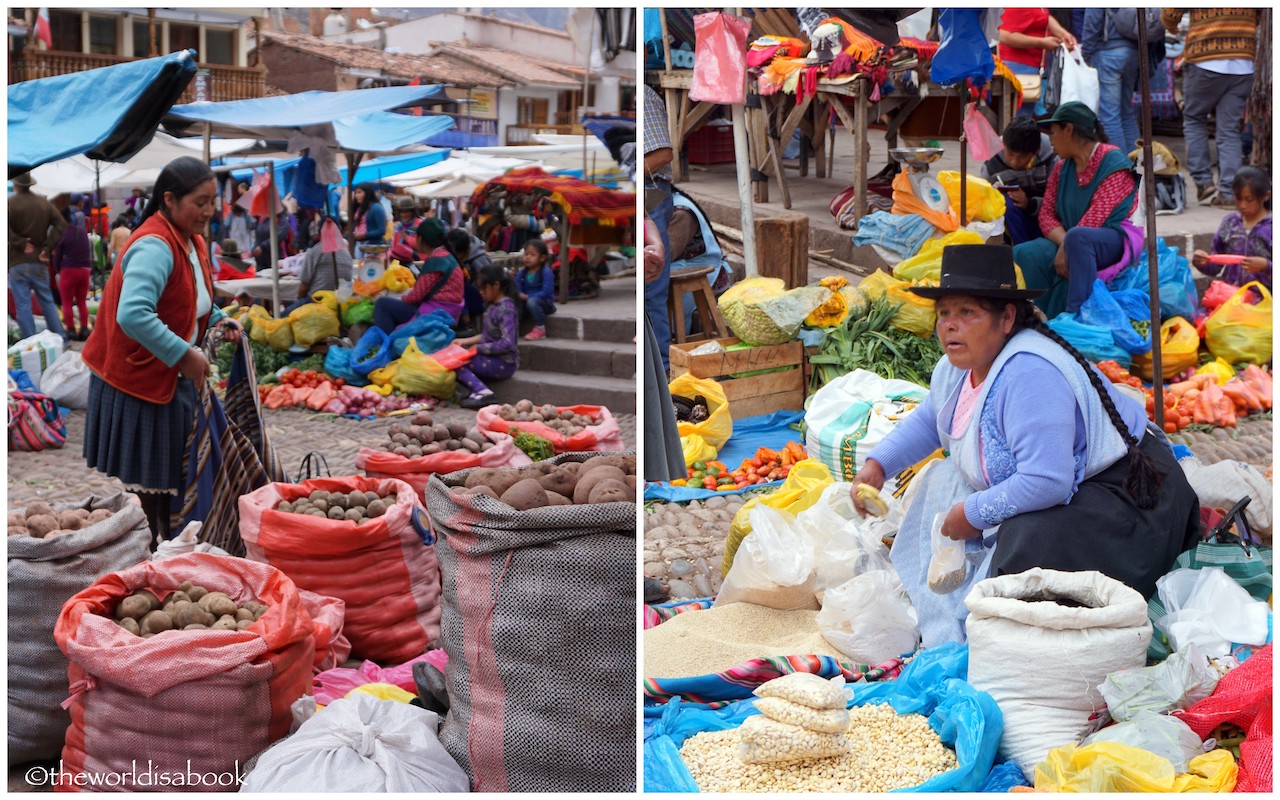
It was so fascinating and interesting to walk around this area and see flowers, fruits and vegetables we’ve never seen before. We loved all the vibrant colors from the crafts to the produce to the villagers’ clothing. The locals were all welcoming and friendly too.
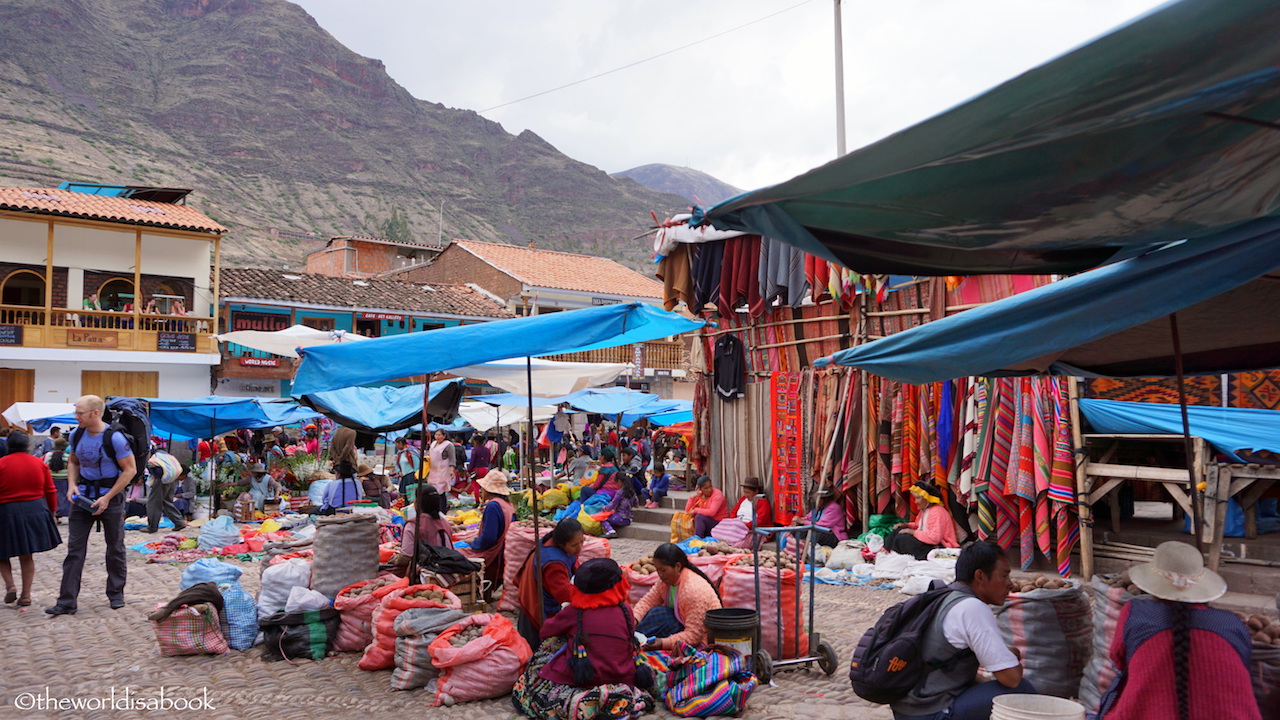
We found out that traditional Peruvian clothing shows which village the locals came from. It was very interesting to watch the women carry goods, produce and children using colorful cloths on their backs and tied in the front.
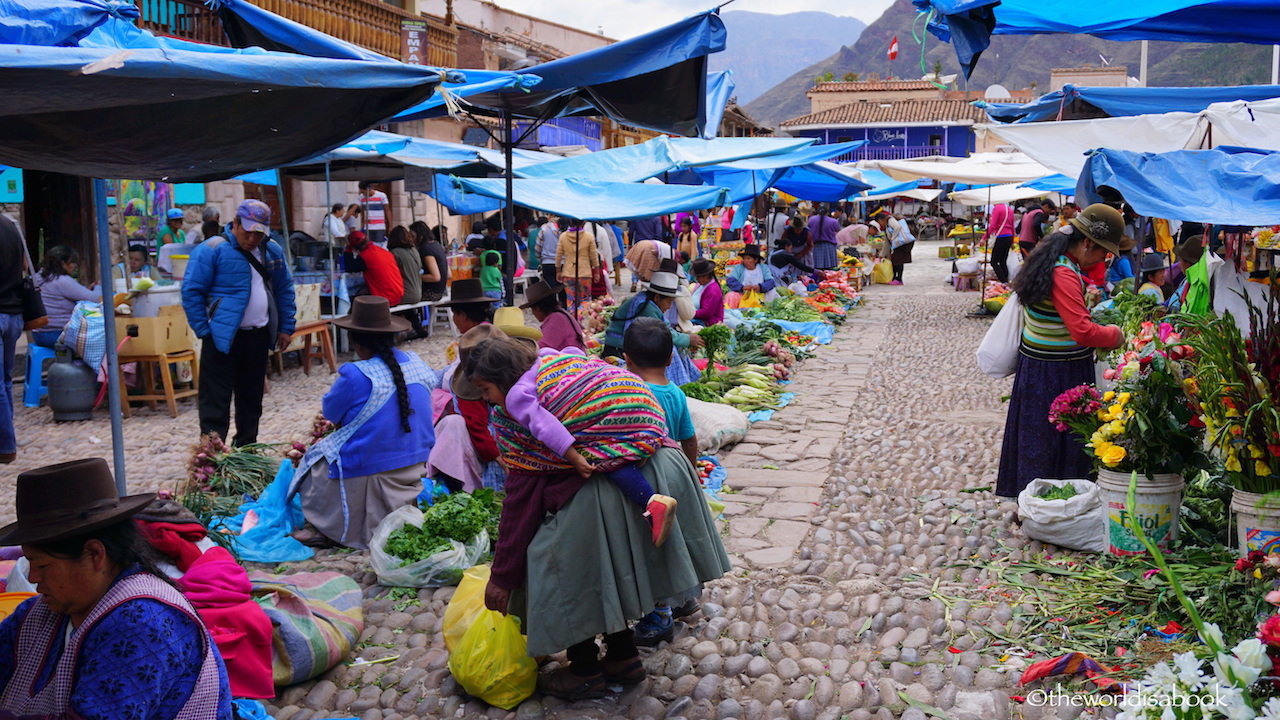
We really enjoyed our visit to the Pisac ruins and market. We knew it wasn’t the best decision to go here after landing at Cusco but we were on a tight itinerary.
Nevertheless, it gave us a wonderful preview of Peru’s Inca ruins and lively markets. Don’t miss Pisac while you’re touring the Sacred Valley or while on your way to Machu Picchu.
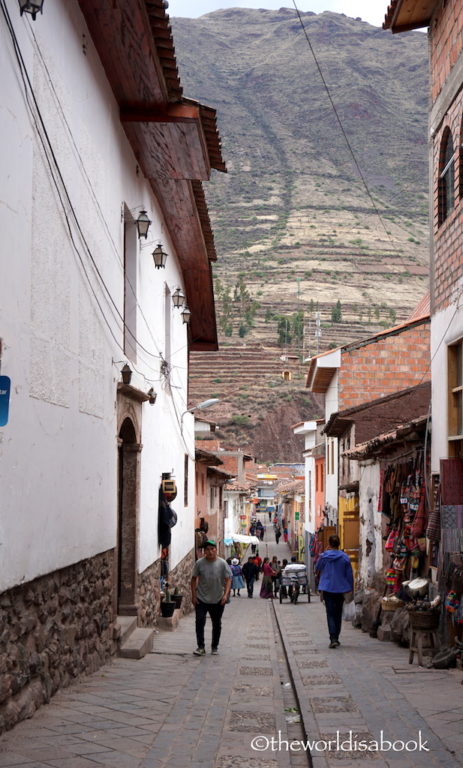
Tips for Visiting the Pisac Ruins and Market
- Buy the Tourist Ticket. The Tourist Ticket or ‘Boleto Turistico’ includes admission to the Pisac ruins. This full ticket includes admission to 16 attractions in Cusco and the Sacred Valley valid for 10 days. There is also a partial ticket that includes the the Pisac, Chinchero, Moray and Ollantaytambo ruins valid for 2 days. Tickets to Pisac are not sold individually. You can buy tickets onsite. There are children discounts but you must provide proof.
- Get a Guide. Try to book a tour with a guide and driver to Pisac. We knew we would have learned so much more with a guide.
- Go on Sunday. Pisac is famous for its Sunday market for great reasons and a wonderful way to see the other villagers. There is still and artisan market here every day.
- Bring Cash. Most of the vendors only accepted cash.
- Bargain or haggle. The vendors expect you to bargain or haggle but please be reasonable with the prices and be respectful. It helps to know some Spanish especially the numbers and asking how much. Some vendors spoke English though.
- Adjust schedule. If your schedule permits, try to rest or really take it easy on your first day at the Sacred Valley to better acclimate to the altitude. We would have loved to see the upper sector under different circumstances. Next time!
- Hiking to the ruins. Visitors also use Pisac as a base to explore other areas. If you’re acclimated to the altitude and want to hike up to the ruins instead of getting up there by car or bus, there is a trail from the town by the Plaza de Armas church. The trail is intermediate. It takes at least 90 minutes one way. An alternative is to take a taxi up to the ruins and hike down to the town.
Related Peru Posts:
*Have you visited Pisac or is it on your travel wish list?
Pin it for later!
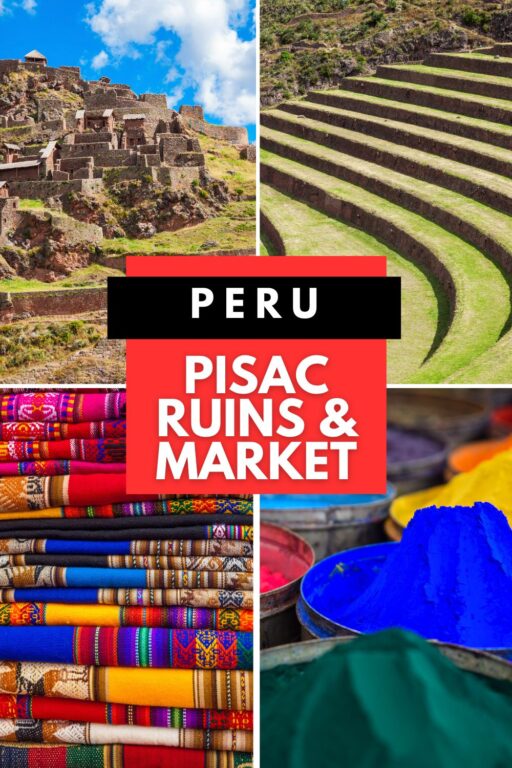
The altitude gets me when I go from the East Coast to Colorado so I’m sure that Peru would totally do me in. Your photos are very inspiring and make me want to head to Peru now. What a beautiful country.
Didn;t do this when I travelled Peru, so had to have a peek :) Shared on StumbleUpon. #theweeklypostcard
Peru is a major bucket list item for me! I can’t wait to visit! Thanks for this wonderful, informative post. #WeekendWanderlust
The Pisac site looks quite substantial. It looks interesting in that there seem to be formidable stone walls and structures along with mud/adobe(?) buildings covered by thatched roofs. I love the bright colours of the souvenir market. I can see why you had to restrain yourself from buying too much. Thanks for the advice on finding a driver and guide to fill in the information that signage might have had.
I couldn’t help but feel like I’d missed out by not visiting Pisac when we were in Peru last year, sadly it was one place we had to sacrifice as we had a really tight schedule. Good tips and info, you’ve taken some great pictures of the ruins and the market as well.
Peru is very high up on my list. We are planning to go to Lima and Machu Picchu, but didn’t know anything about the Pisac Ruins. I’m glad you shared this post. The site looks quite interesting and I’ll surely hire a guide for visiting it. #TheWeeklyPostcard
Peru has most definitely reached the top of my “places I need to visit” list. This post is amazing, I’d never heard of some of these sites but they look incredible.
#TheWeeklyPostcard
We were in Cusco last year, but we had very limited time, so we just visited the city and went to Machu Picchu. I heard about a lot of interesting places in the Sacred Valley but I didn’t know anything about Pisac Ruins. Thanks for sharing, pinned. #TheWeeklyPostcard
It sounds like you made the right decision to avoid altitude sickness by shopping. The colorful merchandise looks interesting.
Wow, another place to add to my Peru bucket list! The views are incredible and the market is so colourful! I would love to explore and see the ruins and interact with the locals. Would love to do some hiking in the area too!
Thanks ! Would you say that one day is enough for both the ruins and the market ?